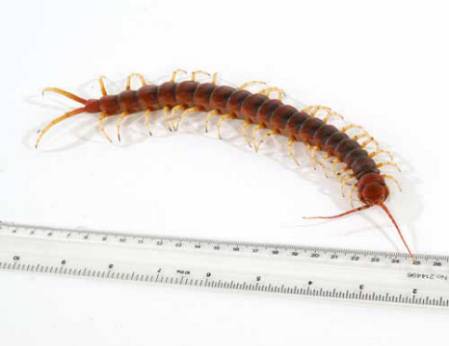Large centipedes and larger datasets
Dr Greg Edgecombe, Department of Earth Sciences, NHM
27th January - 4.00 pm
Earth Sciences Seminar Room (Basement, WEB 05, formerly Mineralogy Seminar Room)
Scolopendromorpha includes the largest and most fiercely predatory centipedes, totalling more than 700 species. Subjected to phylogenetic analysis since the late 1990s, early studies drew on small sets of external morphological characters, mostly those used in classical taxonomic works.
Scolopendra gigantea
In order to bolster the character sample, new anatomical data were worked up by systematically sampling the group’s diversity in order to formulate new characters from understudied structures/organ systems. Simultaneously, targeted sequencing of a few markers for a small (but growing) number of species provided the first molecular estimates of phylogeny. These have resulted in stable higher-level relationships that predict a single origin of blindness in three lineages that share this trait, and are now backed up by transcriptomic datasets with high gene occupancy. Explicit matrices of morphological characters and fossils coded as terminal taxa remain vital to “total evidence” dating/tip dating of the tree.
More information on attending seminars at http://www.nhm.ac.uk/research-curation/news-events/seminars/



